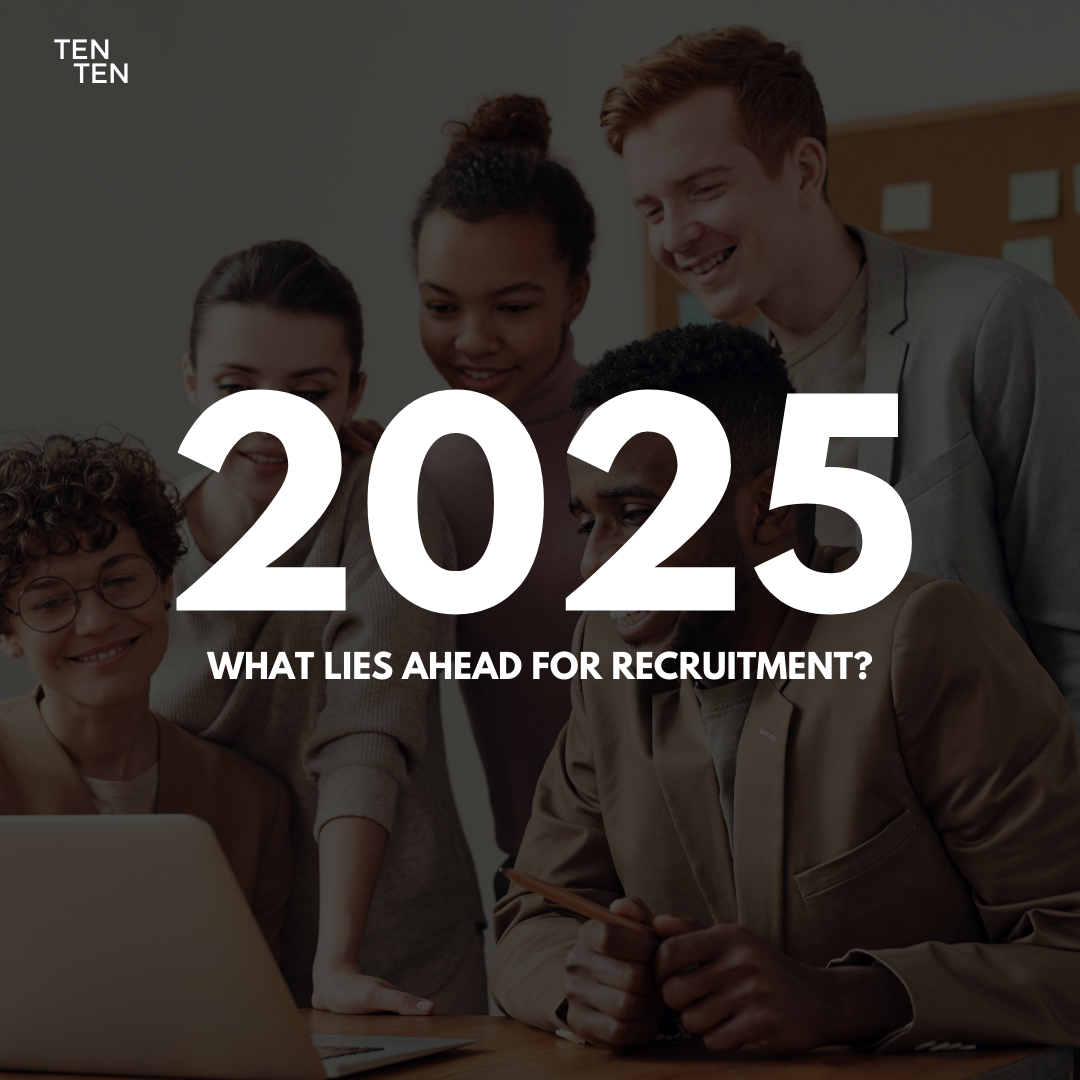The year 2025 began with much anticipation, with both talent and businesses adapting to the shift in workplace dynamics, the now often weekly advancements in technology, and the ever-changing expectations from both sides of the employment divide.
At TENTEN Partners, we believe three key trends will define recruitment in 2025: the return to more in-office appearances, the transformation of Diversity, Equity & Inclusion (DEI) initiatives, and the evolving demand for sought-after skills in hiring due to Artificial Intelligence (AI).
In this article, we will explore what these mean for both talent and businesses.
1. A Shift Back to the Office and What It Means for Hiring
The pandemic ushered the world into the era of remote work, but it was clear that many sectors were not going to fully embrace this shift overnight. Hence, the course correction, as more companies pushed for in-person collaboration, talent pushed for greater flexibility, and both parties settled for a hybrid arrangement.
With location-based hiring on the rise again, companies are looking to bring employees (and new talent) back into the office, yet many strategies are proving ineffective. We recommend offering competitive benefits that align with company culture, foster employee well-being, and go beyond standard hybrid arrangements. While in-person collaboration is valuable for team cohesion, mentorship, and faster execution, some reports suggest that without impactful incentives, it may deter top talent.
Therefore, businesses must adapt accordingly, and so must talent.
2. The Changing Landscape of DEI in Hiring
The inception, adaptation, and implementation of DEI initiatives were driven by a positive mission. However, in recent times, in the face of economic pressures and shifting political landscapes, some organisations are scaling back their DEI efforts, while others are reinforcing them.
As recruiters, we recognise the need to find tangible, measurable, and actionable ways to integrate DEI into our clients' hiring strategies. We believe that the key metric to focus on is how much a candidate can contribute to business innovation and success. From blind recruitment to the development of robust talent pipelines, it is essential that any commitment to DEI is, first and foremost, about attracting top talent.
This is how competitive players in the market will succeed: by adopting a people-first approach that drives real impact.
3. How AI Has Changed Hiring in Terms of Sought-After Skills
Since OpenAI’s ChatGPT launched in 2022, AI and Large Language Models (LLMs) have reshaped industries. Not only has AI made many jobs easier, but it has also widened the skills gap. On one hand, it has created demand for new, specialised skills, while on the other, it has rendered previously in-demand skills obsolete.
For recruiters, this means that hiring strategies must evolve, as businesses now seek candidates with skill sets that bridge both worlds. LLMs have undeniably transformed how we work, how businesses hire, and how candidates approach job applications, given the widespread adoption of AI tools.
Recruiters must stay ahead of the curve, identifying major skill gaps, accurately distinguishing those who can genuinely do the work from those who can only ‘AI’ the work, and, most importantly, finding talent that aligns with evolving business needs. This will ensure organisations build a workforce capable of thriving in an AI-driven economy.
Conclusion
As businesses navigate 2025, recruitment strategies must evolve to meet the demands of a changing workforce. The shift back to office work, the transformation of DEI initiatives, and the influence of AI on sought-after skills all require a proactive and adaptive approach. Recruiters who understand these trends and align hiring strategies accordingly will help businesses attract, retain, and develop the talent needed for long-term success.








